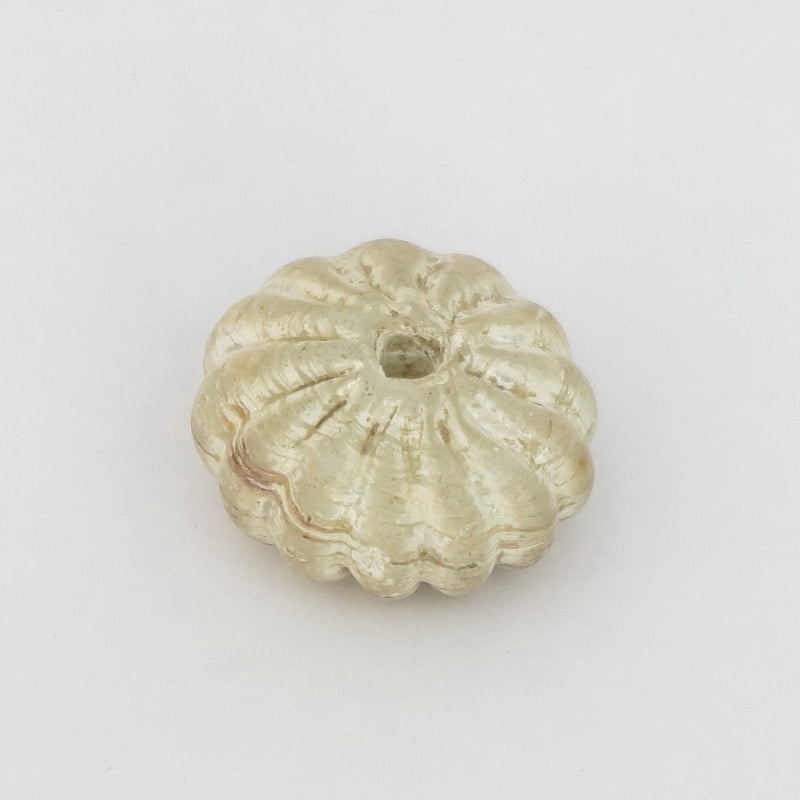MALAIKA
Ancient Chinese Glass Bead
Ancient Chinese Glass Bead
SKU:hn1116-031
Couldn't load pickup availability
Product Description: This large glass bead is believed to have been crafted during the Spring and Autumn period of the Song dynasty. The bead, originally decorated with paintings on milky white glass, retains some brown coloring. However, due to significant iridescence, the intricate details of the design are no longer discernible.
Specifications:
- Origin: China
- Estimated Production Era: 10th century BCE – 2nd century BCE
- Dimensions: Approximately 33mm in diameter and 18mm in height
- Hole Size: Approximately 5mm
Special Notes:
Due to lighting conditions during photography, the actual product may appear slightly different from the images. The images are taken under illuminated conditions, representing the color as seen in a well-lit environment.
As this is an antique item, it may have scratches, cracks, or chips.
About Warring States Beads:
Warring States Beads, or "戦国玉" (Sengoku-dama), are glass beads made during China's Warring States period (circa 5th – 3rd centuries BCE), before the unification by Qin. The oldest Chinese glass items were excavated in Luoyang, Henan Province, dating back to the 11th – 8th centuries BCE. However, glass products became more widespread during the Warring States period. Early Warring States beads often featured a ceramic base called faience, decorated with glass patterns. Later, entirely glass-made beads were produced, with common designs including "Seven Star Beads" and "贴眼玉" (Eye Beads) characterized by spotted patterns.
The techniques and design elements of these glass beads were influenced by Roman glass and other West Asian regions. However, the materials used in Chinese glass beads during this era differ in composition, showcasing the advanced glass-making technology of ancient China. These beads are valued not only for their historical significance but also for their rich designs and colors, making them popular among collectors.
Share





